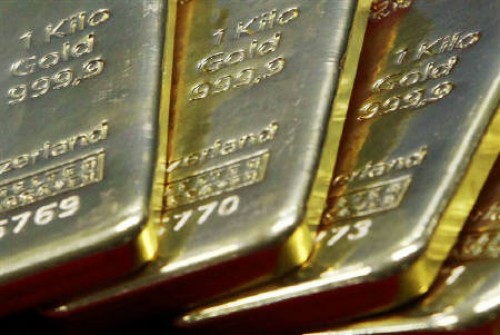Oil falls 4% as dollar rises and vaccine rollout stalls

Follow us Now on Telegram ! Get daily 10 - 12 important updates on Business, Finance and Investment. Join our Telegram Channel
By Scott DiSavino
NEW YORK - Oil prices sunk for a fifth day in a row on Thursday to their lowest in two weeks on a stronger dollar, a further increase in U.S. crude and fuel inventories and the weight of the ever-present COVID-19 pandemic.
Brent futures fell $2.65, or 3.9%, to $65.35 a barrel by 11:05 a.m. EDT (1505 GMT), while U.S. West Texas Intermediate (WTI) crude was $2.70, or 4.2%, lower at $61.90.
That puts both contracts on track for their lowest closes since March 3. The fifth day of declines for both contracts also marks the longest losing streak for WTI since February 2020 and for Brent since September 2020.
That also puts both contracts down over 8% since March 8 when Brent rose to $71.38 a barrel, its highest since January 2020, and WTI rose to $67.98, its highest since October 2018.
The International Energy Agency said on Wednesday that the Paris-based energy watchdog does not expect oil prices to enter a supercycle, or an extended period where prices rise well above their long-run trend.
"The oil price ‘super’ cycle rhetoric is finally getting a bit of a reality check. The negative sentiment was kicked off by doubts in Europe over the AstraZeneca vaccine, and was ossified by the nearly 2.4 million-barrel build in U.S. crude inventories," said Louise Dickson, oil markets analyst at Rystad Energy.
U.S. government data on Wednesday showed crude inventories have risen for four straight weeks after severe cold weather in Texas and the central part of the country in February forced shutdowns at refineries.
U.S. crude inventories rose by 2.4 million barrels last week, the U.S. Energy Information Administration (EIA) said on Wednesday. [EIA/S]
Traders said those stockpiles could grow further now that WTI on March 12 switched from backwardation to contango, where front-month is cheaper than the second-month.
"Contango is bearish because it encourages (firms to) store crude oil and sell it further down the curve at a profit," said Bob Yawger, director of energy futures at Mizuho in New York.
The premium of the Brent front-month over its second-month, meanwhile, was the lowest since early February.
A sharp rise in the value of the dollar after the U.S. Federal Reserve meeting has also contributed to the oil sell-off. A stronger dollar makes oil more expensive for holders of other currencies.
"Yesterday's U.S. Federal Reserve meeting provided a boost to equities ... U.S. economic growth has been revised upwards while unemployment is expected to decline," PVM Oil Associates analyst Tamas Varga.
A slowdown in some vaccination programmes and the prospect of more restrictions to control the coronavirus, meanwhile, have tempered expectations for a recovery in fuel use.
Britain said that global supply bumps meant its vaccine rollout would be slower than hoped in the coming weeks but it expects deliveries to increase from May.
A number of European countries have halted use of the AstraZeneca shot because of concerns about possible side effects, though the World Health Organization said Europe should continue to use the vaccine.
(Additional reporting by Julia Payne in London and Aaron Sheldrick in Tokyo; Editing by David Goodman and Marguerita Choy)












 320-x-100_uti_gold.jpg" alt="Advertisement">
320-x-100_uti_gold.jpg" alt="Advertisement">










